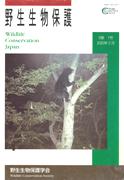8 巻, 1 号
選択された号の論文の4件中1~4を表示しています
- |<
- <
- 1
- >
- >|
原著
-
原稿種別: 原著
2003 年 8 巻 1 号 p. 1-9
発行日: 2003/02/21
公開日: 2017/10/18
PDF形式でダウンロード (707K) -
原稿種別: 原著
2003 年 8 巻 1 号 p. 11-17
発行日: 2003/02/21
公開日: 2017/10/18
PDF形式でダウンロード (658K) -
原稿種別: 原著
2003 年 8 巻 1 号 p. 19-30
発行日: 2003/02/21
公開日: 2017/10/18
PDF形式でダウンロード (973K) -
原稿種別: 原著
2003 年 8 巻 1 号 p. 31-44
発行日: 2003/02/21
公開日: 2017/10/18
PDF形式でダウンロード (1282K)
- |<
- <
- 1
- >
- >|
